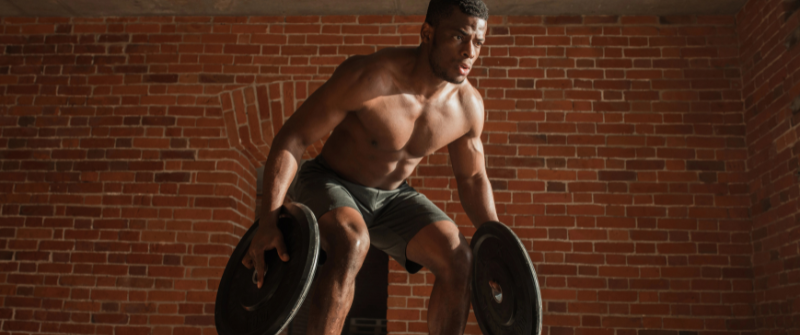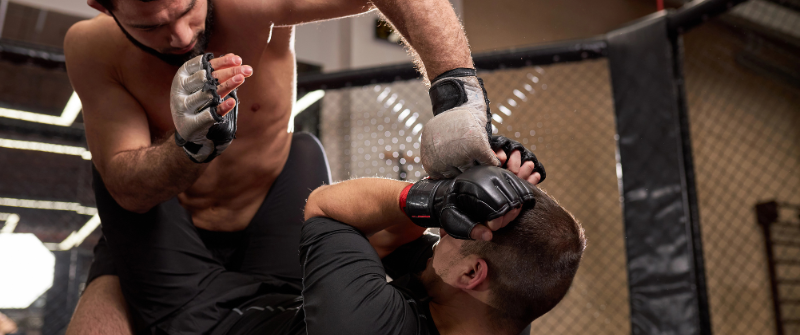.png)
- by NEXO Team
- June 12, 2025
Jiu-jitsu is physically demanding by design, and part of what draws people to it is the full-contact, high-pressure nature of the sport. But that same intensity means that injuries are common, even in gyms with careful instruction and experienced coaches. For any jiu-jitsu gym owner, risks tied to student injury liability can’t be ignored. Just one mishap could have lasting financial and legal consequences without proper martial arts liability insurance or a solid gym owner insurance policy. Understanding how BJJ gym insurance protects against these challenges is part of running a safer operation that’s prepared for anything.
Common Injuries in Jiu-Jitsu Training
Injuries are part of the territory when it comes to jiu-jitsu. Even in gyms with great coaching and strict safety protocols, sprains and strains are hard to avoid, especially in the knees, shoulders, and ankles. Submissions gone wrong may lead to dislocated joints or hyperextensions, particularly when newer students hesitate to tap in time. Accidental head contact during takedowns or live rolling can result in concussions, while skin infections like ringworm, staph, and mat burns spread easily despite regular cleaning. Overuse injuries are common as well, and they often build slowly through repetitive movements or poor technique.
Student injuries may seem like individual setbacks, but for gym owners, they often come with serious business consequences. One injury can quickly become a liability issue, especially without solid BJJ gym insurance or martial arts liability insurance in place. Even a minor accident could expose jiu-jitsu gym owners to legal and financial fallout. That’s why it’s important to think about student injury liability as part of day-to-day operations, not just worst-case scenarios. The right martial arts insurance or gym owner insurance policy helps create a more stable foundation. For facilities that also operate as fitness studios, broader fitness studio liability coverage provides added protection against long-term injuries that aren’t immediately obvious.
Also Read: Rolling Safely: The Ultimate Guide to Fitness Insurance for Jiu Jitsu Practitioners
Why Injuries Pose a Major Risk to Gym Owners
When a student gets injured, the consequences can extend far beyond the mat. Personal injury claims, lawsuits, and insurance disputes all place serious financial pressure on any gym, regardless of its size or experience. Without proper BJJ gym insurance or martial arts liability insurance, even a single claim could drain resources quickly. Medical bills, lost wages, and legal fees often follow, and along with affecting the injured student, they can also directly threaten the stability of your business. For gym owners, this kind of exposure turns day-to-day risks into long-term problems.
There’s also the reputational side of injury management to consider. If an incident is handled poorly, word spreads fast, and it can start to affect both student retention and new sign-ups. People want to train where they feel safe and supported, and injury stories, whether they’re true or exaggerated, damage that trust. This is where the right gym owner insurance or martial arts insurance policy becomes a safety net. It allows you to respond professionally and protect your business while still doing right by the student.
For gyms that also run group fitness or conditioning classes, broader fitness studio liability coverage helps manage overlapping risks and reduces overall exposure to jiu-jitsu gym owner risks.
How to Prepare Your Gym and Protect Your Business
Implement Clear Safety Protocols
Preventing injuries starts with structure. Every class should include proper warm-ups and cooldowns to help reduce strain and prepare the body for training. Instructors should guide students through techniques based on their experience level, rather than allowing freeform experimentation that could lead to injury. Clear hygiene standards are just as important, so gym owners should mandate clean uniforms, regular mat cleaning, and clear protocols around skin infections to protect students and minimize risk. These steps may seem basic, but they’re part of a larger system of risk reduction that supports martial arts liability insurance coverage.
Require Signed Waivers and Health Disclosures
Accidents happen, and when they do, paperwork matters. Every student should sign a legally vetted liability waiver before ever even stepping onto the mats, and these waivers should spell out the risks right from the start. Collecting up-to-date emergency contacts and medical history also helps staff respond quickly if something ends up going wrong. This kind of documentation not only improves student safety but helps protect against student injury liability as well, which is something every jiu-jitsu gym owner needs to plan for, no matter how well their program runs.
Educate Coaches and Instructors
Teaching skill is one part of coaching, but risk awareness is important, too. All instructors should have current CPR and first aid certification, and they need to be trained to spot red flags, like pairing size mismatches or spotting reckless rolling behavior. Setting a culture of controlled, ego-free training helps prevent injuries and keeps students progressing without unnecessary risk. Gym owner insurance and martial arts insurance help cover unexpected incidents, but smart instruction helps reduce the number of claims in the first place.
Maintain Proper Insurance Coverage
Even with a careful, experienced team, accidents still happen, and when they do, having the right coverage really matters. Every gym should have general liability insurance, along with accident or medical coverage to help with unexpected injuries. Instructors who lead private sessions or specialized classes also need professional liability protection, especially when working closely with students at higher risk. BJJ gym insurance, along with broader fitness studio liability policies, helps prevent those incidents from turning into major financial setbacks. With solid martial arts insurance, gym owners are able to stay focused on their students while keeping the business protected.
Also Read: Reducing Jiu-Jitsu Studios Insurance Costs With Better Risk Management
Responding to Injuries When They Happen
When an injury happens, your response in the moment sets the tone for everything that follows. Administer first aid if needed, and document the incident clearly while it’s still fresh. Report what happened through the proper channels, and make sure the student and their emergency contact are kept in the loop. Taking quick, thoughtful action helps minimize any confusion and keeps things grounded during a stressful situation.
From there, accurate records are important, not just for your own files, but for legal protection and any martial arts liability insurance claims that may follow. Detailed documentation helps reduce exposure to student injury liability and supports your gym owner insurance policy. After the initial response, follow up with the student to check in and show that their well-being matters. This kind of communication builds trust and helps protect your reputation while also reinforcing the value of strong martial arts insurance coverage.
Final Thoughts
Injuries are part of jiu-jitsu, but poor preparation doesn’t have to be. With clear safety protocols and the right martial arts insurance, gym owners can lower their risk and protect their students and their business.
NEXO takes the guesswork out of gym owner insurance, offering BJJ gym insurance, martial arts liability insurance, and fitness studio liability coverage backed by experience, support, and proven results. Contact us today to learn more!
Categories
Fill out a short form to contact us with your questions or to receive a customized quote.
Recent Posts
-
 NEXO’s Affinity Program: How Fitness Suppliers and Associations Can Partner for Profit and Protection
December 5, 2025
NEXO’s Affinity Program: How Fitness Suppliers and Associations Can Partner for Profit and Protection
December 5, 2025 -
%20(1).png) How to Insure an MMA Gym Without Paying for Coverage You Don’t Need
December 5, 2025
How to Insure an MMA Gym Without Paying for Coverage You Don’t Need
December 5, 2025 -
 Mastering Liability for Jiu-Jitsu Tournaments and Martial Arts Events
December 5, 2025
Mastering Liability for Jiu-Jitsu Tournaments and Martial Arts Events
December 5, 2025 -
 From Zen to Zoning: What Every Yoga and Pilates Studio Owner Should Know Before Signing a Lease
December 5, 2025
From Zen to Zoning: What Every Yoga and Pilates Studio Owner Should Know Before Signing a Lease
December 5, 2025 -
%20(1).png) Why Your Referral & Loyalty Program Can Impact Your Insurance Rates
December 5, 2025
Why Your Referral & Loyalty Program Can Impact Your Insurance Rates
December 5, 2025

